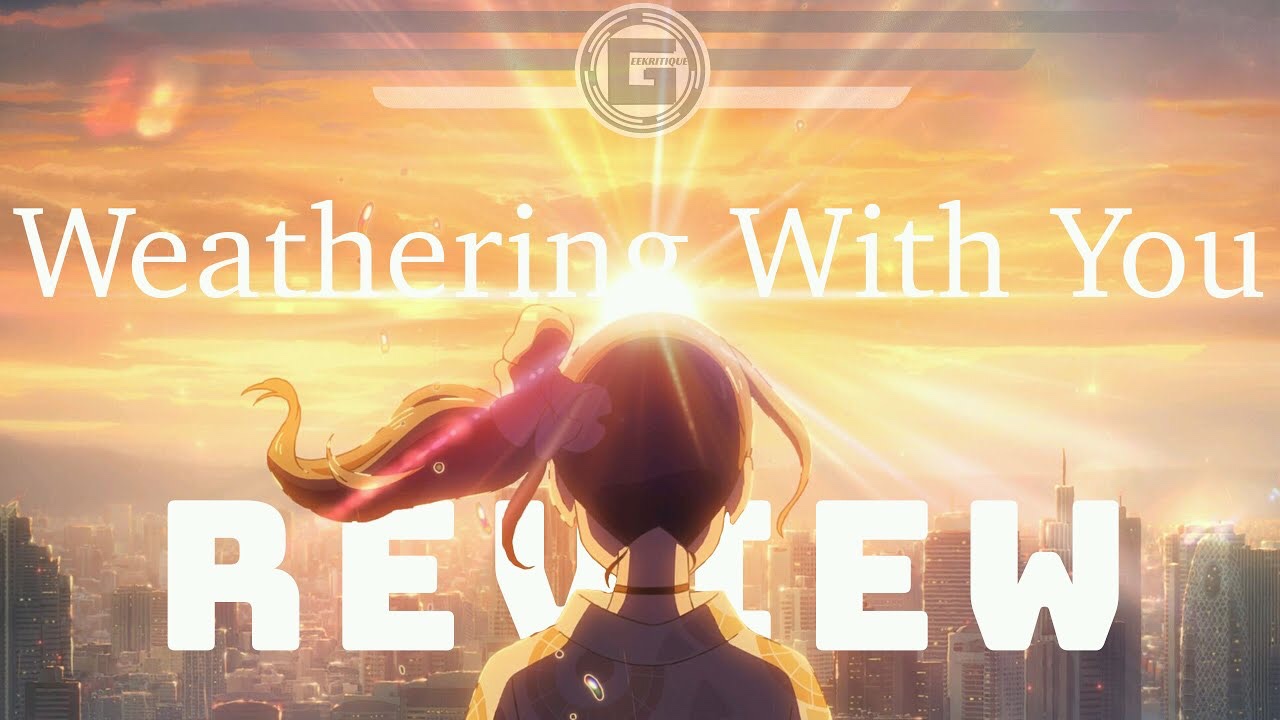Makoto Shinkai began his career as an animator at age 30. In the 20 years or so since, he’s created a name for himself as someone who consistently tops his previous works in scale, scope, and technicality. Weathering With You, the latest film by the Japanese director and followup to the all-time highest grossing anime film ever, Your Name, proves to be all that and more. It’s a breathtaking achievement, and a film on par with some of the best works produced by the venerable Studio Ghibli.
Is it better than Your Name, though? This is a debate I had with my wife after leaving the theater. In many ways yes, but in other ways no. And ultimately that is a testament to how fantastic the film is, if we could even stop to compare it with Your Name. For many, ourselves included, Your Name put Shinkai on the map. The 2016 film was such a fresh take for viewers accustomed to the fantasy/fairytale-esque Ghibli fare, that going into this next movie it’s impossible not to have some preconceived notions of the director’s competence and the type of film you are going to witness. It felt simultaneously like visiting an old friend and experiencing something wholly new.
The animation was, unsurprisingly, superb. Perhaps it was my familiarity with the previous film’s offerings, however, that pushed me as not being as impressed as I might have been, had I not had preconceptions of his style. But without a doubt there are scenes that will take your breath away. One scene in particular touched me with its sheer beauty as much, if not more so than the story’s actual climax did, and brought both my wife and I to tears. The animation studio was complimented by many of Ghibli’s finest, after their Studio had closed down. Shinkai himself expressed a level of gratitude that those animators would rather work for the Studio that produced Your Name as opposed to going to some television anime factory. And the love for animation is truly apparent in Weathering With You.
One of the more significant aspects of the animation was it’s use of water. The film follows the story of two teenagers trying to make their way in a Tokyo bombarded by nonstop rain. It’s a surprisingly well executed message about the new norms experienced around the world through climate change, albeit to a narrative extreme. But because of the setting, the technicalities of each shot are heightened tremendously. I don’t purport to be some expert on the workflow of animators, but the way water interacts with light, skin, reflections, gravity, surface tension, and more, most certainly added an extra layer or three of work in almost every outdoor shot throughout the entire film. The scope of the work is, frankly, unfathomable.
The protagonists Hina and Hodoka are lovable ones, not dissimilar to Taki and Mitsuha from Your Name. Hodaka has moments of being too headstrong for my tastes in a character, but the story allowed his choices, rash though they may be, to be fully realized and each affected the plot accordingly. Certain plot devices are frustratingly well written, and when you want the story to go one way, Shinkai finds a way to disarm you and throw you into another plot thread entirely.
Hina is a delightful lead, and her self-sacrificing nature is one I find incredibly admirable in a character. She wants to see people smile again. While Hodoka is on the hunt to write a story on some fabled Sunshine Girl, who can turn away rain, we learn that Hina actually IS a Sunshine Girl. And she has a 100% success rate. This, apparently, is based on actual Japanese folk lore, and isn’t something I know anything about one way or the other besides what was presented in the film, but it was such a wonderful window into the culture of the country.
The film blends these themes of Japanese folk lore and superstitions with genres like slice of life, disaster, and sci-fi. It’s a really powerful, truly charming blend, one that keeps you thinking about its subtle messages days after having seen the movie.
In its effort to become more relatable to international markets than Your Name was, I feel Weathering With You lost a bit of itself. There’s a scene early on where Hodoka finds himself in a McDonald’s, and after consuming a BigMac, he exclaims that was the best dinner he’d ever had. This isn’t to be taken literally, I’m sure, but more as an exclamation of the boy’s hunger and how certain meals just hit the spot. But it did feel like targeted ad placement, and cheapened the story somewhat.
The film, in typical Shinkai fashion, takes a dark turn at the end of its second act. Decisions are made by characters that not all will agree with, as they cannot be misconstrued as anything less than selfish. It attempts to explore the fact that we live in a stifled society, always wary of what we post online, what we say and do in public. And because it doesn’t glorify those decisions, it’s my opinion that the film actually gets away with it, and you feel the director’s confidence in the final product shine through.
Shinkai has made such a striking name for himself within the anime community, and since the success of 2016’s Your Name, it’s hard not to see why. The only director to have had more international success than he has is the one and only Hayao Miyazaki. And it’s clear that the torch for this generation’s Miyazaki is currently being passed into Shinkai’s hands. Will his next work be as strong as Your Name, or Weathering With You? If so, I think it is safe to say that Shinkai is indeed the next Miyazaki.
For more discussion on this film, watch our recent video where my wife and I break down why it works so well:


